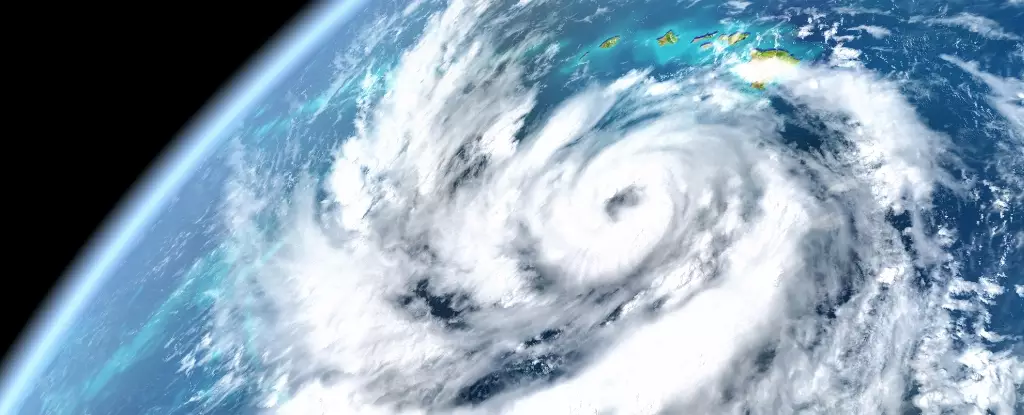The recent unveiling of Microsoft’s artificial intelligence model, dubbed Aurora, promises to upend long-standing methodologies in weather forecasting and climate-related predictions. The potential of this innovation is not just about marginal enhancements in accuracy; it signifies a seismic shift in how we understand and predict our atmospheric conditions in an increasingly volatile climate. Traditional models have long relied on established physical principles, demanding enormous computational resources and often lagging in adaptability to real-time scenarios. With Aurora, have we finally found a solution that not only enhances accuracy but also streamlines the forecasting process to unprecedented levels?
Aurora’s Distinct Edge Over Conventional Models
What truly sets Aurora apart from existing forecasting systems is its reliance on historical data alone, allowing it to learn and predict with remarkable precision. According to researchers, Aurora has demonstrated its prowess by forecasting hurricane paths more accurately than established entities like the US National Hurricane Center, which has long been regarded as a gold standard in the industry. The implications of Aurora’s capabilities are staggering; it can usher in a new era where considerably cheaper and faster predictions may save lives and reduce economic losses associated with extreme weather.
One striking example of Aurora’s effectiveness was its successful prediction of Typhoon Doksuri, which wreaked havoc across the Philippines. Official forecasts at the time inaccurately suggested a path northward, but Aurora pinpointed the impending disaster with impressive foresight. Such instances highlight not just the utility of Aurora but also the profound irresponsibility of relying solely on outdated methods. As extreme weather events become more unpredictable with climate change, our systems of forecasting must evolve to maintain relevance and efficacy.
The Cost-Effectiveness Factor
One of the most compelling aspects of Aurora is its economical advantage over traditional forecasting models. Reports highlight that Aurora operates with costs several hundred times lower than conventional systems, making it an attractive option for global weather agencies that often contend with budget constraints. This lopsided cost-benefit analysis raises crucial questions: How long can traditional forecasting methodologies withstand the pressures of technological advancement? Why should governments continue to fund outdated systems while a more efficient alternative is available?
As agencies like Meteo-France develop their own AI models, the stakes have never been higher. The implications extend beyond just operational efficiency; they touch upon global safety and preparedness. Earth’s climate is not waiting for policymakers to catch up or adapt; the urgency is real, and the cost-benefit equation will inevitably press for adoption. The sooner we embrace innovations like Aurora, the better we can safeguard communities vulnerable to climate catastrophes.
The Emerging Competition
Compounding the significance of Microsoft’s breakthrough, other tech giants, particularly Google’s GenCast model, have also demonstrated immense potential by surpassing traditional accuracy in forecasting climate disasters. As these technologies evolve, we may be standing on the precipice of a competitive landscape that will redefine meteorology as we know it. This rapidly changing environment raises further questions: Will we witness an arms race in AI-driven meteorological predictions? Or, conversely, will excessive competition compromise the collaborative efforts needed for a united approach to climate change?
It’s imperative to recognize that while competition could foster innovation, it also needs to be balanced with ethics and the overarching goal of environmental stewardship. Emphasizing the collective benefit of accurate forecasting can steer us toward an ecosystem where public safety is prioritized over profit margins.
Ethics in AI and Meteorology
However, as we explore the vast possibilities presented by AI technologies like Aurora, we must also engage with the ethical dilemmas that emerge from their implementation. A fast-paced evolution of forecasting systems compels us to consider data privacy and the potential misuse of information gleaned from AI—factors that should not be sidelined as we embark on this journey. The very real risk lies in exacerbating social inequalities by ensuring only certain regions or populations gain access to these life-saving insights.
AI’s integration in our lives is inevitable, but if it is to be truly transformative, it must also be inclusive. As we leverage the power of AI to navigate the turbulent waters of climate change, we must ensure that no community is left behind in this critical endeavor. Only then can we claim that we are truly harnessing technology for the greater good, paving the way for a resilient future in the face of unprecedented challenges.

Leave a Reply